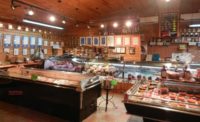The right stuff
Longstanding companies are not afraid to make changes in marketing as they pursue markets. Sara Lee Corp. made headlines last month when it dropped famous country singer Jimmy Dean as the spokesperson for the brand he founded more than 30 years ago. Dean publicly responded with bewilderment and scorn.
As is typical of most sausage segments, breakfast brand leaders remain the major players. Jimmy Dean refrigerated breakfast sausage is number one, with $214.2 million in sales for a 23.1 percent dollar share of the market. Bob Evans is next, with just more than $123 million in sales; a closer look at the rankings indicates that Bob Evans sales increased 6.7 percent in the last year, while Jimmy Dean posted a 3.1 percent loss.
Top Five Brands
Latest 52 Weeks Ending November 30, 2003
| Brand | Dollar Sales | Dollar Sales % Change Yr Ago |
| Total category | $929,172,416 | 5.7% |
| Jimmy Dean rfg breakfast sausage | 214,215,856 | -3.1 |
| Bob Evans rfg breakfast sausage | 123,002,208 | 6.7 |
| Private-label rfg breakfast sausage | 63,509,188 | 14.1 |
| Tennessee Pride rfg breakfast sausage | 49,429,940 | 2.8 |
| Jimmy Dean Fresh Taste. Fast! rfg breakfast sausage | 45,613,980 | 37.6 |
Source: Information Resources Inc. (IRI), Chicago IL
Top Five Brands
Latest 52 Weeks Ending November 30, 2003
| Brand | Dollar Sales | Dollar Sales % Change Yr Ago |
| Total category | $1,561,151,488
| 3.8%
|
| Hillshire Farm rfg dinner sausage | 362,060,480
| -6.8
|
| Johnsonville rfg dinner sausage | 170,932,256
| 11.7
|
| Private-label rfg dinner sausage | 123,758,704
| 8.9
|
| Eckrich rfg dinner sausage | 113,612,760
| 4.0
|
| Bryan rfg dinner sausage | 37,702,176
| -19.7
|


Report Abusive Comment